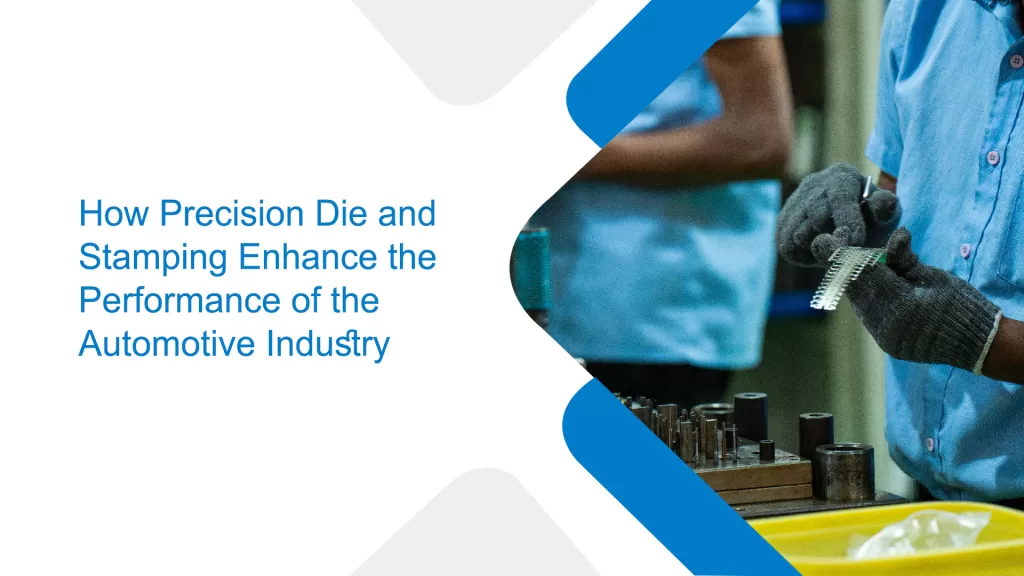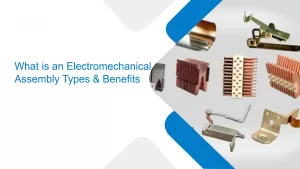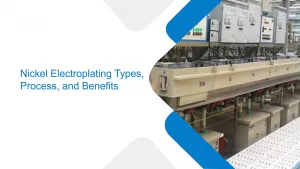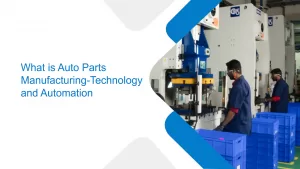How Precision Die and Stamping Enhance the Performance of the Automotive Industry
- Progressive Die Stamping |
- Nov 13, 2024

The automobile sector has made precision die and stamping procedures indispensable, as they significantly improve the dependability and efficiency of vehicle parts. Using high-speed stamping machines and specially manufactured dies, metal sheets are cut, shaped, and formed into exact, elaborate shapes.
Precision die stamping yields accuracy and efficiency essential for complex components in modern cars that must meet tough operation, durability, and safety requirements. Here are the points on how precision die stamping enhances the performance of the automotive sector:
The Fundamentals of Stamping and Die Precision
Metal sheets can be shaped and cut into precise shapes and sizes using high-precision metalworking techniques called precision die and stamping. The stamping for automotive parts offers several advantages.
This procedure requires pressing a metal sheet between a die and a punch to make parts with precise specifications. Precision-engineered dies act as molds for the parts, while punches provide the force needed to bend, cut, and shape metal.
Specialized equipment that can reliably and minimally vary in producing vast quantities of parts is needed for the operation. This equipment is frequently computerized and automated. The force that stamping machines can apply differs greatly based on the intricacy of the item they produce, from a few tons to several hundred tons.
Contribution to Enhancing Component Efficiency
Precision dies, and stamping offer excellent repeatability and dependability in production. They significantly improve the performance of automobile components. When manufacturing components like gears, brackets, or other structural pieces that must function well under various circumstances, this procedure reduces variability.
The carefully crafted components reduce the likelihood of misfitting or stress concentration failure, which over time may result in mechanical issues. Precision die stamping can be used to make intricate shapes for components, improving their functionality inside a car.
For example, complex designs in exhaust or transmission systems can enhance load distribution, heat dissipation, or airflow, improving overall vehicle performance.
Improvements in the Technology of Precision Stamping
Technological breakthroughs have considerably boosted the precision die solution capabilities in the automobile industry. Engineers may produce extremely precise and optimal die designs using contemporary computer-aided design software, guaranteeing every facet of the component’s structure and form.
As a result, there are fewer production defects, and the parts are guaranteed to meet all standards. Automated stamping machines guarantee efficient and reliable manufacturing with sensors and real-time monitoring systems. These devices can produce large quantities of goods with the high precision required for automotive parts, cutting waste and raising total productivity.
Keeping Up with The Modifications in The Automotive Sector
A change in precision die and stamping techniques have been brought about by the growing need for automobile tooling. A few years ago, precision metal stamping firms could produce a few thousand components for a single model using a tool.
The automobile industry is producing increasingly customized car models due to technological advancements. Producing a single instrument was insufficient to meet market expectations. Car manufacturers are currently producing numerous versions of the same vehicle.
The way precision die & stamping firms distribute the tools required to generate many variants of the same item needs to change, even though it greatly increases income for automakers.
Process of Precision Stamping in the Automobile Sector
Process engineers evaluate the various steps in making the precision die solution equipment required to produce automotive designs. They then come upon a technique that makes it possible for producers of precision stamps to move swiftly through the whole tooling process.
This contributes to a 50% reduction in production time and establishes an economical means of meeting automotive industry demands without sacrificing tool efficiency. Due to recent technological advancements, the most optimal precision metal stamping tool designs for a productive operation are now possible.
Benefits of Precision Stamping Die Use in The Automotive Industry
Durability
Due to its ability to be formed into intricate molds, some metals, like aluminum, perform well in precise die and stamping processes. Working with these metals to achieve the necessary results is quite simple when employing the precise metal stamping method.
Cost of Manufacturing
Creating a precision die solution is a material-efficient process. It also helps in lower manufacturing costs.
Maximize Scrap
With recyclable materials, precision metal stamping can produce the same output level as fresh raw materials.
Speed-to-Manufacturing
Precision metal stamping dies are designed to operate sequentially to minimize disruptions to continuous production.
Accuracy
Precision metal stamping for automotive parts is designed with such sophistication that it allows the metals to be cut to the customer’s exact specifications. Therefore, automobile manufacturers can integrate precision finished parts into their automobiles, both inside and outside.
Final Thoughts:
Eigen creates electromechanical assemblies, mechanical sub-assemblies, and metal components of light and thick gauges with near pitch, tight tolerance, and high precision. We offer the best quality stamping for automotive parts. We support the creation of intricate die designs and their close tolerance manufacturing, enabling the production of 3-D net-shaped parts.
Ujjwal handles crucial roles like AGM Marketing, researcher, and is an author for KDDL – Eigen. He currently works with Eigen for implementing proven techniques and strategies for marketing plans on online and offline platforms. An expert in efficiently executing SEO, SEM, email marketing, social media marketing, PR marketing, Print campaigns, etc. Ujjwal has coordinated an efficient marketing team on various creative campaigns and programmatic buying to support various digital cross-promotion efforts. Implement efficient search optimization strategies with the help of collateral material and metrics.
In his former years, Ujjwal has years of experience in a managerial role for several reputed companies. His years of experience combined with the flair of writing help him come up with result oriented strategies for Eigen.




